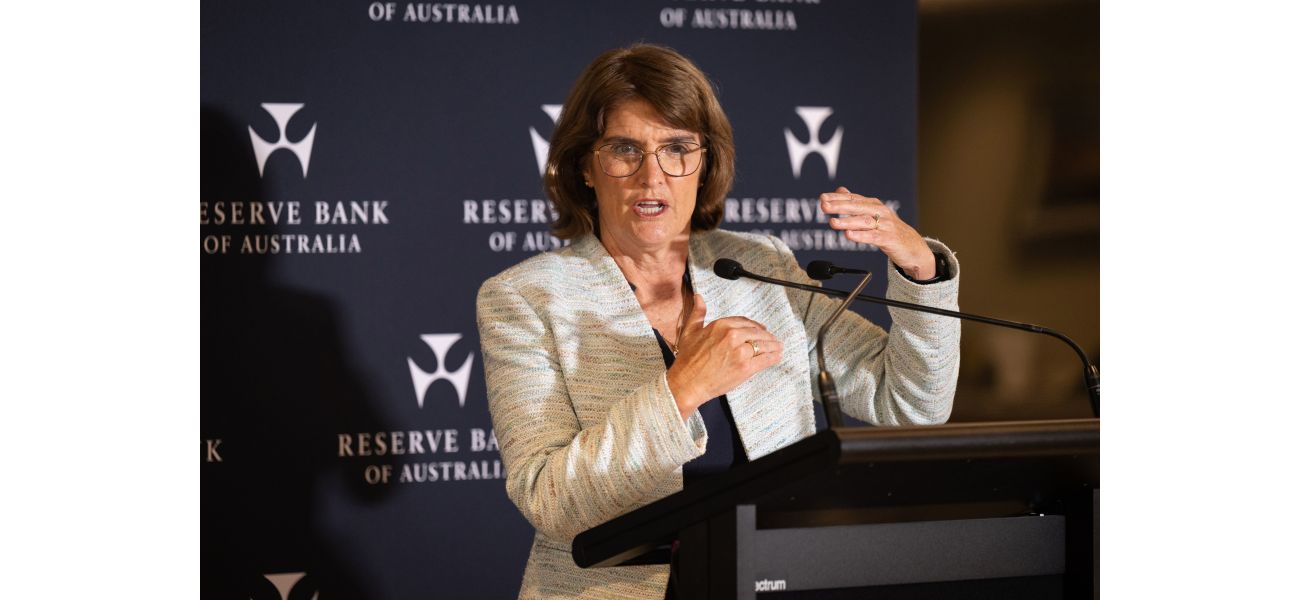The RBA's main focus when determining interest rates.
The ruling affects 3.2 million Australian homeowners and has wide-ranging consequences for the economy.
November 19th 2024.

Every few months, a group of people called the Reserve Bank gets together to discuss whether they should raise, keep the same, or lower interest rates. This decision affects over 3 million Australians who have a mortgage on their own home, and it also has a ripple effect on the entire economy. But what exactly goes into making this decision? Let's take a closer look.
One of the main factors that influences interest rates is inflation. The Reserve Bank's job is to keep inflation between 2-3%, and they use interest rates as a tool to achieve this. If inflation is too high, they may raise interest rates to decrease demand and control prices. On the other hand, if inflation is too low, they may lower interest rates to give people more money to spend and increase inflation. While there is monthly data on inflation, the quarterly figures are typically given more weight. Another important number to watch is the "trimmed mean," which excludes volatile price changes and provides a better measure of underlying or core inflation. If this number stays close to the target, it is likely that interest rates will follow suit.
The unemployment rate is another crucial factor in determining interest rates. According to the Reserve Bank's charter, they must work towards "full employment" in Australia. Generally, if the unemployment rate rises, there is a higher chance of interest rates being lowered. This is because looser monetary policy can lead to more job opportunities. High unemployment is also a sign of a weaker economy, which is another reason why it is linked to interest rate cuts. However, in 2020, the unemployment rate has remained low despite other economic weaknesses. This is due to the unprecedented impact of the pandemic, which has disrupted the usual relationship between unemployment and interest rates.
As the Reserve Bank Governor, Michele Bullock, noted in May, the current situation is not always a straightforward equation. There are many other factors that play a role in setting interest rates, such as consumer spending, international financial conditions, and household debt. Ultimately, the goal of the Reserve Bank is to bring inflation back to target, as this is crucial for maintaining a stable economy. While their mandate also includes employment, they prioritize controlling inflation over joblessness.
It's also important to keep in mind that the information provided on this topic is general in nature and should not be considered personal financial advice. Before making any decisions, it's essential to consider your own objectives, financial situation, and needs. There is no one-size-fits-all solution, and the Reserve Bank must carefully consider all the economic factors before making any changes to interest rates.
One of the main factors that influences interest rates is inflation. The Reserve Bank's job is to keep inflation between 2-3%, and they use interest rates as a tool to achieve this. If inflation is too high, they may raise interest rates to decrease demand and control prices. On the other hand, if inflation is too low, they may lower interest rates to give people more money to spend and increase inflation. While there is monthly data on inflation, the quarterly figures are typically given more weight. Another important number to watch is the "trimmed mean," which excludes volatile price changes and provides a better measure of underlying or core inflation. If this number stays close to the target, it is likely that interest rates will follow suit.
The unemployment rate is another crucial factor in determining interest rates. According to the Reserve Bank's charter, they must work towards "full employment" in Australia. Generally, if the unemployment rate rises, there is a higher chance of interest rates being lowered. This is because looser monetary policy can lead to more job opportunities. High unemployment is also a sign of a weaker economy, which is another reason why it is linked to interest rate cuts. However, in 2020, the unemployment rate has remained low despite other economic weaknesses. This is due to the unprecedented impact of the pandemic, which has disrupted the usual relationship between unemployment and interest rates.
As the Reserve Bank Governor, Michele Bullock, noted in May, the current situation is not always a straightforward equation. There are many other factors that play a role in setting interest rates, such as consumer spending, international financial conditions, and household debt. Ultimately, the goal of the Reserve Bank is to bring inflation back to target, as this is crucial for maintaining a stable economy. While their mandate also includes employment, they prioritize controlling inflation over joblessness.
It's also important to keep in mind that the information provided on this topic is general in nature and should not be considered personal financial advice. Before making any decisions, it's essential to consider your own objectives, financial situation, and needs. There is no one-size-fits-all solution, and the Reserve Bank must carefully consider all the economic factors before making any changes to interest rates.
[This article has been trending online recently and has been generated with AI. Your feed is customized.]
[Generative AI is experimental.]
0
0
Submit Comment





